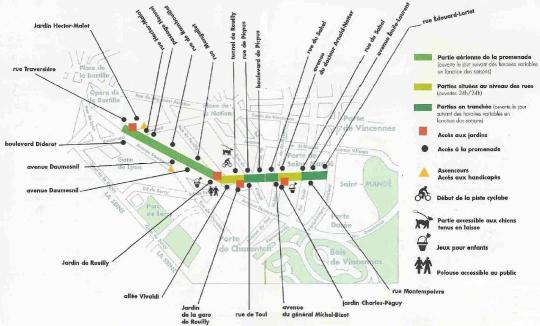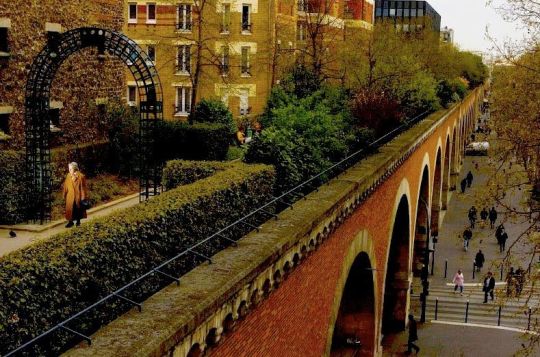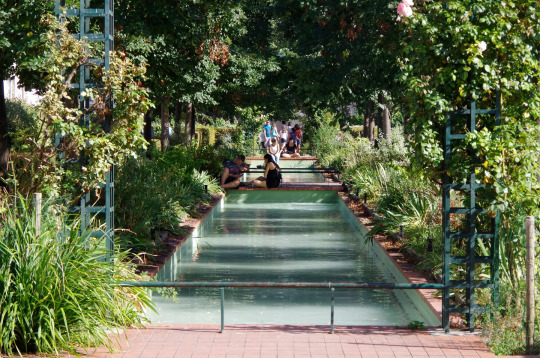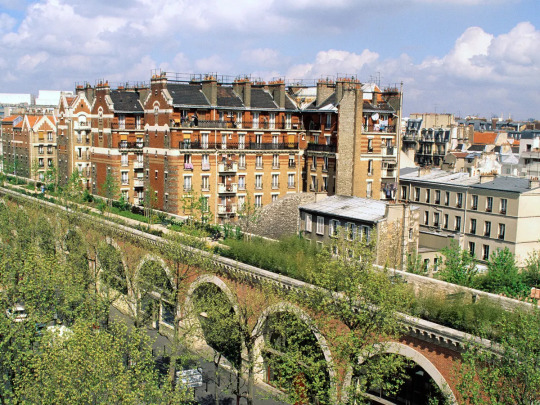#Hector Malot
Explore tagged Tumblr posts
Text


Remi and Mattia from "Remi, Nobody's Girl" (1996).
#remi nobodys girl#remy nobodys girl#hector malot#world masterpiece theater#world masterpiece theatre#nippon animation#anime#1996
10 notes
·
View notes
Photo

Today in Anime History
September 1st, 1996
The World Masterpiece Theater anime Remi, Nobody’s Girl premieres. The Remi story had previously been adapted as an anime in 1977, but this time Remi was changed to be a girl among other significant changes from the source material.
Based on the novel Sans Famille by Hector Malot
9 notes
·
View notes
Text
From Wikipedia:
The anime [The Story of Perrine] is based on the novel En Famille by Hector Malot, which is also translated as Nobody's Girl. Another work by the author, Sans Famille, has a very similar story. That work was used as the basis of an anime film, Chibikko Remi to Meiken Kapi, as well as two separate anime series, Nobody's Boy: Remi and Remi, Nobody's Girl. The latter series should not be confused with The Story of Perrine.
I'd like to read these novels and watch the anime! I'm going to start by watching Nobody's Boy: Remi and reading the novel, then watch Remi: Nobody's Girl, then watch The Story of Perrinne and read that novel.
It'll be interesting to see what does and doesn't change with the gender of the protagonist. I'll likely have some criticism related to that.
2 notes
·
View notes
Text
Van Dis dwaalt door Parijs en de literatuur
Tijdens zijn verblijf in Parijs wandelde Adriaan van Dis (1946) veel en vaak door de Franse hoofdstad. Met de blik gericht op de wijk en de straatnamen ontdekte hij het adres waar de Zweedse schrijver August Strindberg (1849-1912) verbleef. Voor de Zweedse auteur was Parijs een hel. Hij onderging er boze machten, visioenen, wanen en werd er uiteindelijk stapelgek. Hemingway tijdens zijn Parijse…

View On WordPress
#21-ste eeuws#advies#August Strindberg#een hel#geitenhoeders#groot eethuis#Hector Malot#Hemingway#Joli Coeur#ode aan schrijven#Padrone Garofoli#Parijs#Rémi#schrijver#stapelgek#straatnamen#Verlaine#Vitalis#zelfvertrouwen#Zweeds
1 note
·
View note
Text
News - AnimEigo announced one final new license for the year: Osamu Dezaki's Nobody's Boy Remi, to be released on bluray in 2025 for their newly branded "Ruined Childhood" imprint (specifically for titles that made us cry as kids!). The series had at one point been released on DVD in the US via ImaginAsian, and has been available streaming on RetroCrush in the US. There won't be an English dub included, but it will include the French dub.
18 notes
·
View notes
Note
you wanted non-english books? please consider this offer:
Kruistocht in Spijkerbroek (1973, Thea Beckman)
De Gouden Dolk (1982, Thea Beckman)
Hasse Simonsdochter (1983, Thea Beckman)
Kinderen van Moeder Aarde (1985, Thea Beckman, first of a triology)
Sans Famille (1878, Hector Malot)
some of these might be stretching the definition of fantasy a bit, but i would say they count
hello! I’ve been looking through blurbs and reviews for these and I’m not sure about these as fantasy.
De Gouden Dolk and Hasse Simonsdochter seem to me to just be historical fiction (there are some reviews of the latter in particular that praise Beckman for seamlessly blending her fictional protagonist with real historical events).
Sans famille looks to just be realist (though sentimental/romanticized and a bit picaresque) 19th-century fiction.
meanwhile, Kruistocht in Spijkerbroek — since Dolf is transported to the 13th century by a time machine — and Kinderen van Moeder Aarde — since it’s set after the Third World War and I don’t see any mention of supernatural elements in the blurb or in reviews — both look to me like science fiction. (given these sci-fi elements, I would definitely accept both for the sci-fi blog even if they do also have fantasy elements.)
could you, or someone else who’s read any of these, elaborate on what makes these fantasy?
10 notes
·
View notes
Note
If you could read one book again for the first time, which book would that be?
Sans Famille by Hector Malot, absolutely.
I have read it a bit later than most folks who ever pick it up at around sixteen, and I fell in love with it both in terms of prose and style. Perfect book in so many ways.
Remi to this day touches my soul, his resilience and the humanity evoked in every step of the tale, both good and bad. The way that the story wraps itself around the desire to be human and to belong, and what familial love is and is not... I truly wish I could feel that way again.
It made me really realize how deeply I loved my parents, teenage rebellious phase and all, and what I desired from other people around me. It was a Moment for my brain about what is the essence of being human (belonging with other people).
I wish to find my own Lise and Mattia and have the "mother, brother, and people who loved you in and beyond your misery". I wish I was as loving of people as Remi is. It genuinely I think is one of the best children's books you can give to a person.
#im fond of david copperfield and huckleberry finn and tom sawyer too but sans famille always wins for me#in terms of books about Life idk
4 notes
·
View notes
Text
Birthdays 5.20
Beer Birthdays
John Adam Lemp (1798)
Louis de Luze Simonds (1852)
Eduard Buchner (1860)
Louis Hemrich (1872)
Lord "Benjie" Iveagh (1937)
Judy Ashworth (1942)
Oliver Hughes (1959)
David Walker (1964)
Five Favorite Birthdays
Emile Berliner; inventor of flat phonograph record (1851)
Israel Kamakawiwo'ole; Hawaiian singer (1959)
John Stuart Mill; English philosopher (1806)
Timothy Olyphant; actor (1968)
James Stewart; actor (1908)
Famous Birthdays
Danny Aiello; actor (1933)
Emile Berliner; German/US inventor (1851)
Cher; pop singer, writer (1946)
Joe Cocker; rock singer (1944)
Christopher Columbus; explorer (1451)
Mindy Cohn; actor (1966)
William Congreve; English inventor (1772)
Francis Cotes; English artist (1726)
Henri-Edmond Cross; French artist (1856)
Moshe Dayan; Israeli general (1915)
Honore de Balzac; French writer (1799)
Aleksandr Deyneka; Russian artist (1899)
Alfred Domett; English/NZ poet (1811)
Patrick Ewing Jr.; basketball player (1984)
William Fargo; banker (1818)
Gardner Fox; author (1911)
George Gobel; comedian (1919)
Tony Goldwyn; actor (1960)
John M. Harlan; US Supreme Court justice (1899)
William Hewlett; H-P Founder (1913)
Nick Heywood; UK pop singer, guitarist (1961)
Guy Hoffman; rock musician (1954)
Levinus Lemnius; Dutch writer (1505)
Shorty Long; musician (1940)
Dolley Madison; first lady of James Madison (1768)
Hector Malot; French author (1830)
Hans Meerwein; German chemist (1879)
R.J. Mitchell; English engineer (1895)
Bobby Murcer; baseball player (1946)
Sumitranandan Pant; Indian poet (1900)
Bronson Pinchot; actor (1959)
Busta Rhymes; rapper (1972)
Michele Roberts; UK author (1949)
Louis Smith; jazz trumpeter (1931)
Tony Stewart; automobile racer (1971)
Jewel Styles; pornstar (1988)
Dave Thomas; Canadian comedian, actor (1949)
William Thornton; architect (1759)
David Wells; baseball player (1963)
Jane Wiedlin; pop singer (1958)
Anthony Zerbe; actor (1936)
3 notes
·
View notes
Text







La coulée verte, ou promenade plantée
Promenade plantee map
Map of promenade plantee. Promenade plantee map (Île-de-France - France) to print. Promenade plantee map (Île-de-France - France) to download. The promenade plantee is an original walk, which stretches from the Bastille to the Bois de Vincennes, takes you sometimes in the air and sometimes underground. The promenade plantee unique design will take you from viaduct to footbridge, from tunnel to trench, through the East of Paris. It was created in 1988 by Philippe Mathieux and Jacques Vergely, on the site of the old railway line that linked Place de la Bastille to Varenne-Saint-Maur since 1859. Disused in 1969, it gave way to a succession of gardens scattered over 4.5 kilometers: Hector Malot, Reuilly, Reuilly station, Charles-Peguy as its shown in promenade plantee map. Paris has some of Europe most beautiful parks but for something different search out the Promenade Plantee. The promenade plantee its magical, green stroll 10 metres above the street, which begins at the Bastille and winds through the 12th arrondissement for three miles as its shown in promenade plantee map, coming out before the Bois de Vincennes. When a long-abandoned mid-19th century viaduct was converted into the world first elevated park walkway in 1993, most locals thought it a waste of money. Parisians needed time to take a project like this to heart, but now the Promenade is a cherished landmark.
The promenade plantee crosses the entire length of the 12th arrondissement of Paris (4.5 km as its mentioned in promenade plantee map). The promenade plantee follows the route of an old railway line which ceased to be used in 1969. The terminus station was at the Bastille at the current location of the opera house, the trains went to Boissy-Saint-Léger where there is now the RER A. The promenade plantee starts behind the Bastille Opera House. It overlooks the avenue Daumesnil up to the Reuilly garden: it is the famous Viaduc des Arts. The Vivaldi alley is then the commercial part of the promenade. Then this one continues in tunnels and trenches and one ends up joining the golden door and the wood of Vincennes.
Escape Routes: Discover the Promenade Plantée, the Green Heart of Paris Before New York’s High Line there was Paris’ Promenade Plantée – an elevated walkway fashioned from a disused railway that threads together arts venues, bars and parks in the southeastern part of the city. Culture Trip’s Paris correspondent Eleanor Aldridge explores the route. Running above the mêlée of streets, squares and rail lines that crisscross southeast Paris, the Promenade Plantée is a green needle piercing the city’s heart. Beneath this elevated walkway, motos weave in and out of traffic, crowds gather near Place de la Nation for the latest protest and modern developments butt up against some of the 12th arrondissement’s most community-focused neighbourhoods. Ten metres above, a secret world awaits. Construction of the Promenade Plantée, officially known as the Coulée Verte René-Dumont, finished in 1993 – that’s 21 years before the arguably better-known High Line in New York. It runs for nearly five kilometres between Bastille and Vincennes, along a disused rail line that was once plied by chuntering steam trains.
The paved path cuts through parks and old tunnels, while arched green trellises are festooned with roses and framed by cherry blossom in spring. In winter the path becomes starkly beautiful, set against the imperious Haussmannian façades that run alongside it. It’s not only a great walking route – offering peeks into apartments along the way – but the Promenade Plantée also acts as a ready-made itinerary for exploring this corner of the city. Steps make it easy to nip down to street level, or it takes about an hour to walk to the wilds of the Bois de Vincennes.
Viaduc des Arts
The 19th-century railway arches running along Avenue Daumesnil were among the first stretches beneath the Promenade Plantée to be developed. Now known as the Viaduc des Arts, they house bars, studios, restaurants and gallery spaces. Confiture Parisienne is a must-visit: pick up a jar of award-winning jam – perhaps carrot, passionfruit and vanilla – or try a preserve-making class at the weekend. At airy bar-restaurant Gamelle, there’s also bowling, darts and table football, while the food spans hot dogs, tapas and French classics.
Ground Control
Founded six years ago, Ground Control has become the city’s hub for street food, pop-ups, events with a social conscience and anything in between. Sprawling across what was once an enormous SNCF train shed, it encompasses an open-plan food court, several bars, a shop and open spaces used for everything from yoga to painting classes. The buzzy terrace is the place in Paris to find a great spritz and an even better burger, cooked in a refurbished bus.
Bois de Vincennes
The Promenade Plantée ends at the city’s eastern green lung, the Bois de Vincennes – the mirror image of the Bois de Boulogne, west of the city centre. Making up for the lack of parks in central Paris, its 2,459 acres span lakes and woodland interlaced with shady pathways. Once a royal hunting ground, it’s the closest you can get to real countryside these days without leaving the city proper. In summer, festivals and concerts keep things lively well into the evening.
This story appears in Issue 6 of Culture Trip magazine: The Sustainability Issue.
3 notes
·
View notes
Text
AnimEigo Licenses the Nobody's Boy Remi Anime for Blu-ray Disc Release
AnimEigo has announced that it has licensed the Nobody’s Boy Remi anime and will release the title on Blu-ray Disc in 2025. The release will not include an English dub, but will include a French dub. The 51-episode anime released in October 1977. The anime is based on Hector Malot’s 1878 French novel titled Sans Famille (Nobody’s Boy). Nobody’s Boy Remi is described as: Remi is a boy living…
0 notes
Text
Malot Hector - Pompon

Malot Hector - Pompon : Un soir d’hiver en plein Paris, un jeune sculpteur trouve une petite fille noire d’une douzaine d’années dans l’encoignure d’une maison. Comme il l’aurait fait pour tout être vivant dans le besoin, il la ramène chez lui. Avec l’accord de ses domestiques et de ses deux amis, peintre et musicien, ils vont l’élever après avoir entendu son histoire. Quelques années se passent. Pompon devient une jeune femme, ce dont ne s’aperçoivent pas ceux qui l’ont adoptée et ce qui va changer leurs relations. Dans ce roman, datant de 1882, le parcours des esclaves est abordé brièvement, ainsi que le ressenti des regards curieux subis ou de la sexualisation par celle qui en est l’objet. Le roman est aussi intéressant par le fait qu’il montre les différentes phases du métier de sculpteur et nous fait pénétrer dans le milieu artistique parisien chez un sculpteur. Malot aborde le ressenti de cette jeune fille noire ancienne esclave recueillie enfant puis éduquée comme une fille de milieu artistique aisé. Téléchargements : ePUB - PDF - HTML - DOC/ODT Read the full article
0 notes
Text
The Story of Perrine was pretty good, but I didn't like it as much as Nobody's Boy: Remi and Remy: Nobody's Girl, adaptations of a different Hector Malot novel (which I'd heard was similar).
#perrine monogatari#the story of perrine#ie naki ko#ie no naki ko remy#nobody's boy: remi#remy: nobody's girl#nobody's boy#nobody's girl
3 notes
·
View notes
Text
«Sin familia», de Hector Malot

La mayoría de las ediciones que hay de Sin familia de Hector Malot hacen pensar que se trata de literatura infantil, pero yo no estoy tan seguro de que lo sea. Además de que la novela original es bastante más extensa (por lo menos dos o tres veces más) de la que se suele vender y de que no incluye los elementos característicos de ese tipo de literatura, es una historia demasiado dura y lenta como para que pueda ser interesante para un niño: la mayor parte del tiempo Remi está sufriendo o pasando por una situación difícil, y eso puede resultar agotador si no es lo que se buscaba desde un principio. Como hace años vi el anime basado en la novela sabía lo que me iba a encontrar, y en parte por eso me gustó. No sabría decir si me gustó más que el anime (actualmente estoy viéndolo otra vez), porque hay nostalgia mezclada y eso siempre influye mucho, pero me pareció una buena novela. El error más grande me parece que está en lo que se hace con el señor Vitalis: Vitalis es un personaje demasiado entrañable como para hacerlo desaparecer tan pronto en la historia. Debería haber estado hasta bien avanzada la novela o directamente hasta el final. Sin él la historia pierde mucho, porque ningún otro personaje secundario logra reemplazarlo. También me hubiese gustado un poco más de simple vagabundeo en lugar de episodios como el de la mina (que a mi parecer sobra bastante), algo que pensé que llegaría con la entrada de Mattia y que finalmente no ocurrió. Aun con todo, es una bonita y sufrida historia que recomiendo.
0 notes
Text
ISBN: 978-960-04-2339-6 Συγγραφέας: Hector Malot Εκδότης: Κέδρος Σελίδες: 434 Ημερομηνία Έκδοσης: 2006-02-01 Διαστάσεις: 23x15 Εξώφυλλο: Πανόδετο
0 notes
Text
ISBN: 978-960-04-2339-6 Συγγραφέας: Hector Malot Εκδότης: Κέδρος Σελίδες: 434 Ημερομηνία Έκδοσης: 2006-02-01 Διαστάσεις: 23x15 Εξώφυλλο: Πανόδετο
0 notes
Text
Pe lumea asta nu se trăieşte din bunătate ! E nevoie de ea pentru fericirea celor din jurul nostru, însă mai trebuie şi altceva, care noua ne lipseşte.
Singur pe lume
Hector Malot
0 notes